 W
WHNLMS Adolf van Nassau was a unique ship built for the Royal Netherlands Navy.
 W
WThe Anna Paulowna class was a class of steam frigates of the Royal Netherlands Navy. Only Anna Paulowna was completed, parts of Van Galen were used to build the steam corvette Zilveren Kruis.
 W
WThe Ardjoeno class was a ship class of paddle-steamers of the Royal Netherlands Navy. The class comprised Ardjoeno, Gedeh (1850), Amsterdam and Gedeh (1874).
 W
WThe Atjeh class was a class of unprotected cruisers of the Royal Netherlands Navy. The class comprised Atjeh, Tromp, Koningin Emma der Nederlanden, De Ruyter, Van Speyk and Johan Willem Friso.
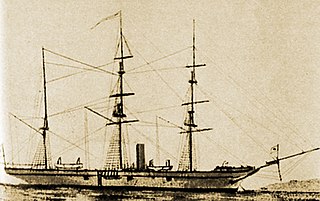 W
WThe Bali class was a ship class of sloops of the Royal Netherlands Navy and Japanese Navy. The class comprised Bali, Kanrin Maru, Soembing and Chōyō Maru
 W
WBatavia Dock, was a floating dry dock built for the Nederlands Indische Droogdok Maatschappij (NIDM) in the 1870s. It was the biggest of two unique tower dry docks, but would never be used.
 W
WHNLMS Bonaire was a 4th class screw steamship of the Royal Netherlands Navy, now under restoration as a museum ship.
 W
WHNLMS Buffel is a 19th-century ironclad ram ship. She was one of the main attractions of the Maritime Museum Rotterdam, also known as the Prince Hendrik Museum, named after its founder, Prince Henry (Hendrik) "The Navigator", who had a naval career and established the basis of the museum back in 1874. In October 2013 the ship moved to Hellevoetsluis and is again open for public.
 W
WHNLMS Cerberus, was a Heiligerlee-class monitor built in Amsterdam for the Royal Netherlands Navy in the 1860s. Cerberus was a true monitor: a ship with shallow draught, only a few (heavy) guns and decent armor. These characteristics made her very suitable to operate way inland in the Dutch delta.
 W
WHNLMS De Ruyter, was an Atjeh-class unprotected cruiser built in Amsterdam for the Royal Netherlands Navy in the 1879–1880.
 W
WHNLMS De Ruyter , was a unique ship built for the Royal Netherlands Navy. She first served as a heavy sailing frigate. Next she was rebuilt as a steam frigate, but she was never finished as such. She was finally rebuilt and served as a Casemate ironclad comparable to the CSS Virginia.
 W
WThe Djambi class was a class of steam corvettes of the Royal Netherlands Navy. The class comprised Djambi, Zoutman, Willem, Leeuwarden, Metalen Kruis and Curaçao. Later two ships of a supposedly 'slightly revised' type were built, the Zilveren Kruis-class corvettes.
 W
WHNLMS Djambi was the lead ship of the Djambi-class, built for the Royal Netherlands Navy from the late 1850s. She was in the 1864 Shimonoseki affair and in the 1873 First Aceh Expedition. She became unfit for service after serving for only 13 years.
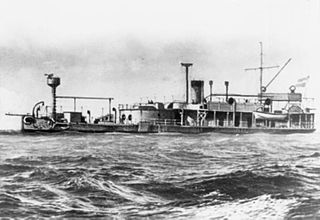 W
WHNLMS Draak was a monitor built by the Rijkswerf at Amsterdam for the Royal Netherlands Navy in the late 1870s.
 W
WThe Ever class was a class of 14 flat-iron gunboats of the Royal Netherlands Navy.
 W
WThe Evertsen class or Kortenaer class was a class of coastal defense ships of the Royal Netherlands Navy. The class comprised Evertsen, Piet Hein and Kortenaer.
 W
WThe Evertsen class was a class of steam frigates of the Royal Netherlands Navy. The class comprised Evertsen and Zeeland
 W
WThe Groningen class was a class of steam corvettes of the Royal Netherlands Navy. The class comprised Groningen, Citadel van Antwerpen and Vice-Admiraal Koopman
 W
WHNLMS Guinea was an Buffel-class monitor built for the Royal Netherlands Navy in the early 1870s. Rearmed in 1887 with more modern ordnance, she was sold for scrap in 1897.
 W
WThe Haarlemmermeer class was a class of 9 gunvessels of the Royal Netherlands Navy. The class was a failure because of its extreme susceptibility to dry rot.
 W
WThe Hector class was a class of 2 gunvessels of the Royal Netherlands Navy. The class proved a failure.
 W
WHNLMS Heiligerlee, formerly known as Panter, was a Heiligerlee-class monitor built in England for the Royal Netherlands Navy in the 1860s. Among the new ships built for the Dutch navy Heiligerlee was the first true monitor: a ship with shallow draught, only a few (heavy) guns and decent armor. These characteristics made her very suitable to operate way inland in the Dutch delta.
 W
WThe Heiligerlee-class monitors were a group of 5 ironclad monitors built for the Royal Netherlands Navy in the late 1860s.
 W
WThe Holland class was a class of six protected cruisers of the Royal Netherlands Navy. The class was built in two groups, each consisting of three ships.
 W
WThe Koetei-class was a class of three colonial schroefstoomschepen 4e klasse (gunboats) built by the Nederlandse Scheepsbouw Maatschappij in Amsterdam and Maatschappij voor Scheeps- en Werktuigbouw Fijenoord in Rotterdam for the Royal Netherlands Navy. The class comprised Koetei, Siboga and Assahan.
 W
WHNLMS Koning der Nederlanden was an iron-hulled ironclad ramtorenschip built by the Rijkswerf at Amsterdam for the Royal Netherlands Navy in the early 1870s. She was the largest ship to serve in the Dutch Navy during the 19th century. The ship was converted to a barracks ship in the late 1890s and stationed in Surabaya in the Dutch East Indies. Koning der Nederlanden was scuttled in Surabaya on 2 March 1942, during the Battle of Java, to prevent her capture by the Japanese.
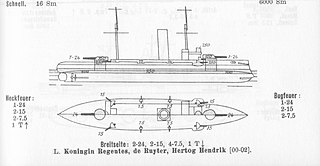 W
WThe Koningin Regentes class was a class of coastal defence ships of the Royal Netherlands Navy. The class comprised Koningin Regentes, De Ruyter and Hertog Hendrik.
 W
WHNLMS Koningin Wilhelmina der Nederlanden was a unique protected cruiser of the Royal Netherlands Navy built by the Rijkswerf in Amsterdam.
 W
WHNLMS Matador was a monitor built in the late 1870s.
 W
WThe Medusa class was a class of 2 steam corvettes with auxiliary power of the Royal Netherlands Navy. The class comprised Medusa, the first Dutch warship with screw propulsion, and Prinses Amelia.
 W
WThe Nias-class was a class of four colonial schroefstoomschepen 4e klasse (gunboats) built by Huygens en van Gelder in Amsterdam and Koninklijke Maatschappij de Schelde in Flushing for the Royal Netherlands Navy. The class comprised Nias, Mataram, Edi and Serdang.
 W
WOnrust Dock of 3,000 tons, was a floating dry dock that served in the Dutch East Indies from 1869 till at least 1933. Up till about 1910 she was a crucial part of the Dutch naval infrastructure in the Indies.
 W
WOnrust Dock of 5,000 tons, was a floating dry dock which served in the Dutch East Indies from 1881 till 1924.
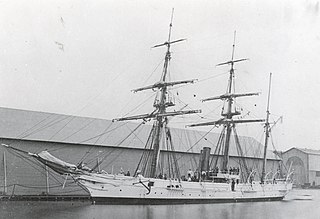 W
WThe Pontianak class was a class of steam screw gunvessels of the Royal Netherlands Navy.
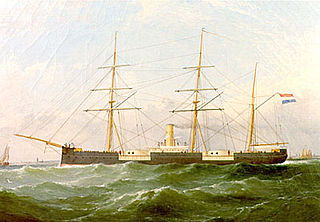 W
WHNLMS Prins Hendrik der Nederlanden was an ironclad ramtorenschip built in Great Britain for the Royal Netherlands Navy in the mid-1860s. She was transferred to the Dutch East Indies in 1876 and participated in the Dutch intervention in Lombok and Karangasem in 1894. The ship was hulked in 1899 and scrapped in 1925.
 W
WThe Riouw class was a class of four steam screw gunvessels of the Royal Netherlands Navy. They were the first composite built ships of the Dutch navy.
 W
WThe Samarang class was a class of steam screw gunvessels of the Royal Netherlands Navy. The class originally comprised Samarang, Batavia and Makassar, but was later extended.
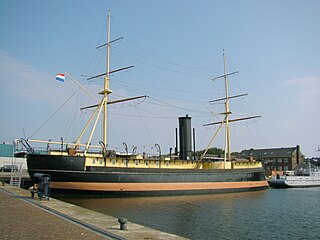 W
WHNLMS Schorpioen is a Schorpioen-class monitor built in France for the Royal Netherlands Navy in the 1860s. These new ships were equipped with heavy rifled 23 cm (9 in) guns, and a heavy armor. The hull had an armor plated belt of 15 cm (6 in) and the gun turret, housing the two guns, had almost 30 cm (12 in) of armor.
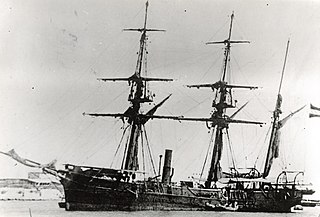 W
WThe Soestdijk class was a class of 8 gunvessels of the Royal Netherlands Navy. The class was built to the same design as the preceding Haarlemmermeer class, but proved far more durable.
 W
WHNLMS Stier was a Schorpioen-class monitor built in England for the Royal Netherlands Navy in the 1860s.
 W
WThe Dutch cruiser HNLMS Sumatra was a small protected cruiser with a heavy main gun. The ship was named after the island of Sumatra in the Dutch East Indies. It was discarded in 1907.
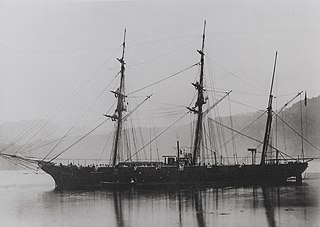 W
WThe Vesuvius class was a class of steam screw sloops of the Royal Netherlands Navy. The class comprised Vesuvius, Cornelis Dirks, Reinier Claessen, Het Loo, Reteh and Prinses Maria.
 W
WVolharding Dock, was a floating dry dock built for the Nederlands Indische Droogdok Maatschappij (NIDM) in the 1870s. It was the smallest of two unique tower dry docks, and the only one that would actually be put in use.
 W
WHNLMS Wassenaar, was a unique ship built for the Royal Netherlands Navy.
 W
WThe Watergeus class was a class of screw sloop-of-war of the Royal Netherlands Navy. The class comprised the 'Watergeus' and the Marnix. A third ship that had been planned was cancelled.
 W
WThe Wodan class was a class of 16 flat-iron gunboats of the Royal Netherlands Navy.
 W
WThe Zilveren Kruis class was a class of two steam corvettes of the Royal Netherlands Navy. The class comprised the Zilveren Kruis and the Van Galen.